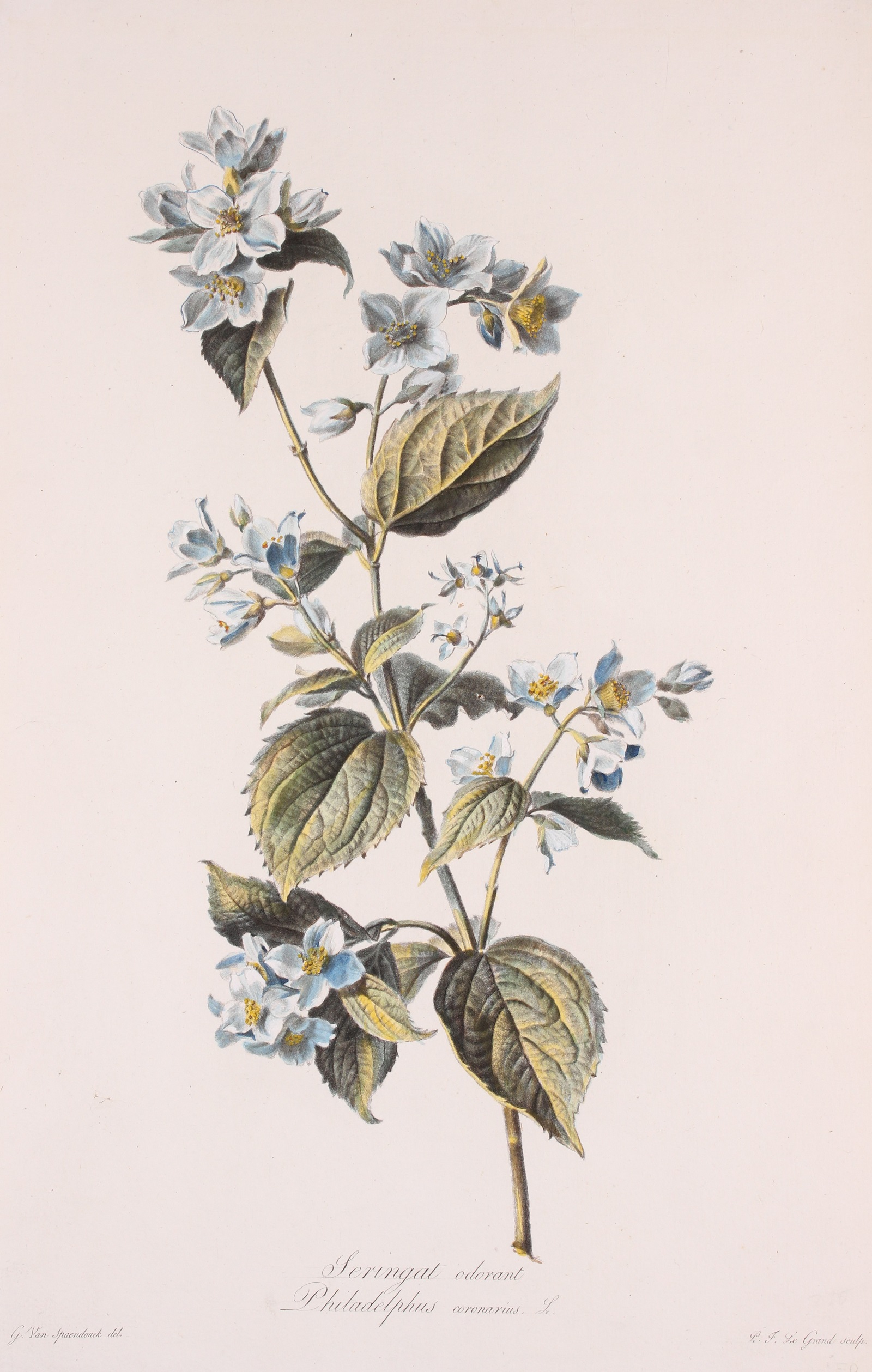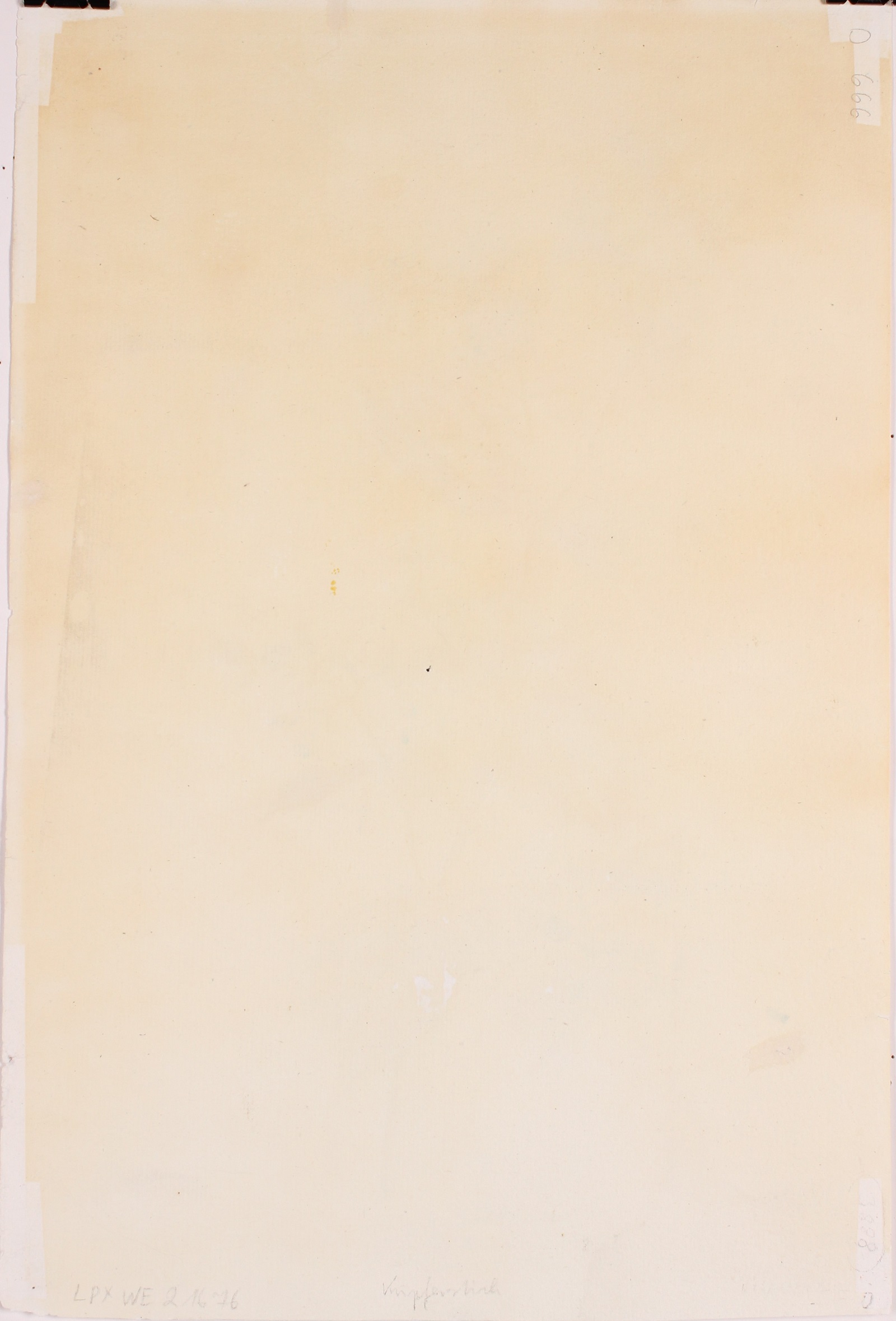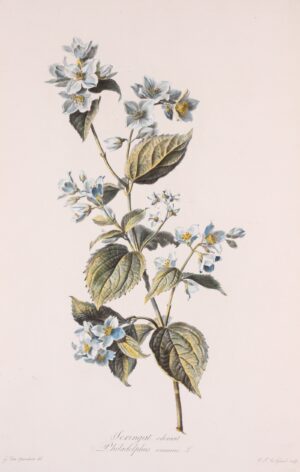Mock orange – Gerard van Spaendonck, 1799-1801
€950
“Seringat odorant – Philadephus coronarius“, stipple engraving made by P.F. le Grand after a drawing by Gerard(us) van Spaendonck from the “Fleurs dessinées d’après nature”, published between 1799 and 1801. With original hand colouring. Size (print) approx. 50 x 33 cm.
Mock orange is a deciduous shrub (it loses its leaves in the fall). It features showy, cup-shaped, four-petal flowers that are very fragrant. The flowers are said to resemble orange blossoms, which is how the shrub got its common name of mock orange.
The botanical name Philadelphus coronarius refers to the Egyptian king Ptolemy II Philadelphus who was fond of nice scents. According to legend, he organized a feast in his palace every year to commemorate the death of Adonis. In pots that have been excavated, traces of fragrant oils have been found. Tables were decorated with silver vases filled with fragrant flowers. So mock orange actually has a royal name.
Gerard van Spaendonck (1756-1842) studied with decorative painter Willem Jacob Herreyns in Antwerp. In 1769 he moved to Paris, where in 1774 he was appointed miniature painter in the court of Louis XVI. In 1780 he succeeded Madeleine Françoise Basseporte as professor of floral painting at the Jardin des Plantes, and was elected a member of the Académie des beaux-arts shortly afterwards.
Van Spaendonck contributed to over fifty works of Les Vélins du Roi, a famous collection of botanical watercolours owned by French royalty. From 1799 to 1801 he published twenty-four plates as part of his Fleurs Dessinees d’apres Nature (Flowers Drawn from Life), which were high-quality engravings for students of floral painting. Today the Fleurs Dessinees d’apres Nature are considered among the best botanical engravings in the world. Stipple engravings with which one is able to differentiate between different tones of gray, turned out to be highly suitable for depicting botanical details, a method that Van Spaendonck also taught his pupil Pierre-Joseph Redouté.
Like other famous flower painters, Van Spaendonck was also technically perfect: in oil, watercolour, pen or pencil, on any scale. With attention to every minute detail and elegance and sophistication of the composition, he shows his mastery. Like Jan van Huysum, Van Spaendonck understood the zeitgeist and created flower compositions that matched the taste of the public of around 1800. He combined the traditional Dutch way of representing flowers with French sophistication and good taste.
Price: Euro 950,-





